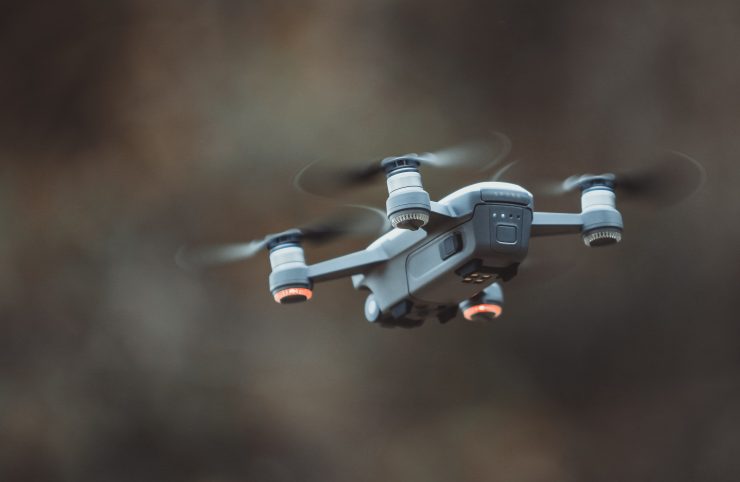You have just opened the box of your brand new drone. You are so excited to play around with it that you plug in the battery to charge, and go online to research how to fly your drone.
After a few hours of it charging up, it’s finally ready to go. You take some practice rounds inside to just to get a feel for the drone in the air and confidence before going outside. Once you’re able to land it safely, take off properly, move it around stably, and feel fully in control, you head straight for the door.
Someone in the background yells to you “make sure where ever you fly it’s legal!” You didn’t think about that part. Hence how you found yourself reading this article! Well, here is everything you need to know about where you can safely and legally fly your drone!
Where Can You Legally Fly Drones?
You may be surprised to know that you can’t fly your drone just anywhere. As an unmanned aerial vehicle, there are rules about how and where you can fly a drone. The most common areas that you cannot fly a drone near are the following:
- Airports
- Major sporting events such as the NFL, MLB, NCAA, NASCAR races, etc.
- Wildfires
- Restricted airspace
Outside of obvious no-fly zones, however, there can be some confusion about where it is legal to fly a drone. Depending on the type of drone and its size, the rules may be different. For example, many kids drones or mini drones are small and simple enough that they are exempt from many drone laws.
Read on to learn how to tell where it’s legal to fly your quadcopter.
Use An App
In today’s world, there is basically an app for everything, and drone flying is not left out. There are tons of laws and regulations about where you can fly. Using an app to help guide you in the right direction is key.
The best apps right now are called “Hover” and “AirMap for Drones”. The FAA also made an app called “B4UFLY“. These apps will not only give you the local laws and regulations of where you can and can’t fly, but also an interactive map which shows nearby airports, helipads, government buildings, and no-fly zones. They even give weather forecasts to help prepare you for your flights.
Every state and local municipality has different laws and regulations for drone flying, so these apps are a must-have for anybody who wants to enjoy their time flying without having to worry about breaking any laws.
Can I Fly a Drone on Private Property?
If you own a property or get permission to fly your drone on someone else’s property, then you are all set and ready to fly. Just like many laws in the United States, private property creates an exception.
Federally in the U.S, you cannot fly your drone higher than 400 feet, and it must remain within your line of sight. You also cannot fly your drone within five miles of any airport or controlled airspace, but other than those few laws, you can basically fly anywhere at any time on private property. If you fly your drone on someone else’s private property without permission, they may have the right to tell you to stop or call authorities if you persist.
Can I Fly a Drone in a Public Park?
Only the FAA can make laws controlling airspace, and they do not limit drone usage in public parks. Parks cannot control their airspace, but they can make laws about take-off and landing on the park’s property. The best way to find out is to use one of the apps that feature drone maps, or ask a local park ranger. National Parks are off limits for drone use, unless you have a special permit.
Use Your Common Sense
This part seems simple, but you would be surprised to learn where people have flown their drones without thinking there would be penalties. People in the UK have been arrested for flying their drones over nuclear sites, soccer stadiums while a match is being played, trying to get close up photos of Big Ben, and many other places. In the US, someone once landed their drone in the White House Gardens.
Flying over crowds of people or in really busy areas is not a good idea, and probably isn’t legal. Think about it yourself, would you feel safe walking down the streets of New York and all of the sudden a drone is hovering above you? Just use your common sense.
If you have any doubts about flying your drone somewhere, it’s best to not do it. The penalties of flying illegally are strict and steep for a reason. It’s for public safety and your own.
Drone Registration
Do I need to register my drone? If you plan on flying a drone that weighs more than 250 grams, then yes, it needs to be registered with the FAA. The drone should have the registration number on it as well as your name, phone number, and address.
Registering your drone is pretty simple and easy. It costs just $5 and needs to be renewed every three years. You also need to be over the age of 13. If you don’t register your drone then you can face some pretty steep legal ramifications. If you get caught, you can face civil penalties of fines up to $27,500, or a criminal charge for which the penalty can be a fine of $250,00 and/or a maximum of a three-year prison sentence.
These are steep penalties to pay for something that costs $5. Get it registered, avoid the stress, and stay out of prison or debt.
The Best Places to Fly
Up to this point, you might think that you can’t fly anywhere unless it’s private property. That’s not true. There are still plenty of places you can go flying your drone. Again, every state has different laws about this so do your research before heading anywhere.
If you are in a place where you can fly in state parks or open public land, you still have to abide by the federal height laws. You also cannot fly too close to other people, so do your best to be aware of your surroundings. Public woods, lakes, rivers, or anything remote are good places to start. If you think you’ll be the only person in the area, fly around as much as you’d like.
Final Thoughts on Where to Fly Your Drone
You need to keep in mind that these strict rules and regulations are for the benefit of everyone. Drones are new and people use them for all sorts of reasons. Just because you might be using it for drone photography or fun, doesn’t mean everyone else is. Be respectful of your area, be safe, and use common sense to avoid any issues with the laws when flying.
Check out these Top-Rated Drones:







Add comment